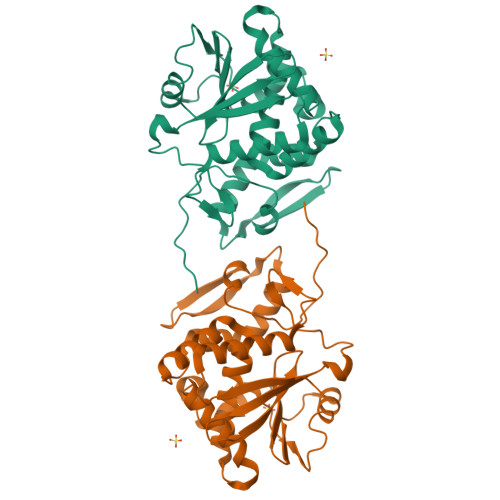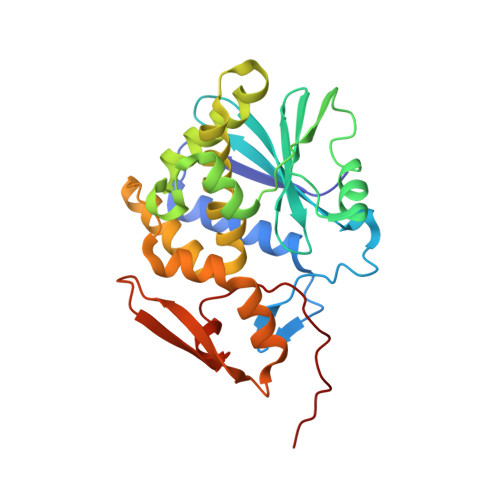The Isolation and Characterisation of Temperature-Dependent Ricin a Chain Molecules in Saccharomyces Cerevisiae
Allen, S.C.H., Moore, K.A.H., Marsden, C.J., Fulop, V., Moffat, K.G., Lord, J.M., Ladds, G., Roberts, L.M.(2007) FEBS J 274: 5586
- PubMed: 17916187
- DOI: https://doi.org/10.1111/j.1742-4658.2007.06080.x
- Primary Citation of Related Structures:
2VC3, 2VC4 - PubMed Abstract:
Ricin is a heterodimeric plant protein that is potently toxic to mammalian cells. Toxicity results from the catalytic depurination of eukaryotic ribosomes by ricin toxin A chain (RTA) that follows toxin endocytosis to, and translocation across, the endoplasmic reticulum membrane. To ultimately identify proteins required for these later steps in the entry process, it will be useful to express the catalytic subunit within the endoplasmic reticulum of yeast cells in a manner that initially permits cell growth. A subsequent switch in conditions to provoke innate toxin action would permit only those strains containing defects in genes normally essential for toxin retro-translocation, refolding or degradation to survive. As a route to such a screen, several RTA mutants with reduced catalytic activity have previously been isolated. Here we report the use of Saccharomyces cerevisiae to isolate temperature-dependent mutants of endoplasmic reticulum-targeted RTA. Two such toxin mutants with opposing phenotypes were isolated. One mutant RTA (RTAF108L/L151P) allowed the yeast cells that express it to grow at 37 degrees C, whereas the same cells did not grow at 23 degrees C. Both mutations were required for temperature-dependent growth. The second toxin mutant (RTAE177D) allowed cells to grow at 23 degrees C but not at 37 degrees C. Interestingly, RTAE177D has been previously reported to have reduced catalytic activity, but this is the first demonstration of a temperature-sensitive phenotype. To provide a more detailed characterization of these mutants we have investigated their N-glycosylation, stability, catalytic activity and, where appropriate, a three-dimensional structure. The potential utility of these mutants is discussed.
Organizational Affiliation:
Department of Biological Sciences, University of Warwick, Coventry, UK.


















